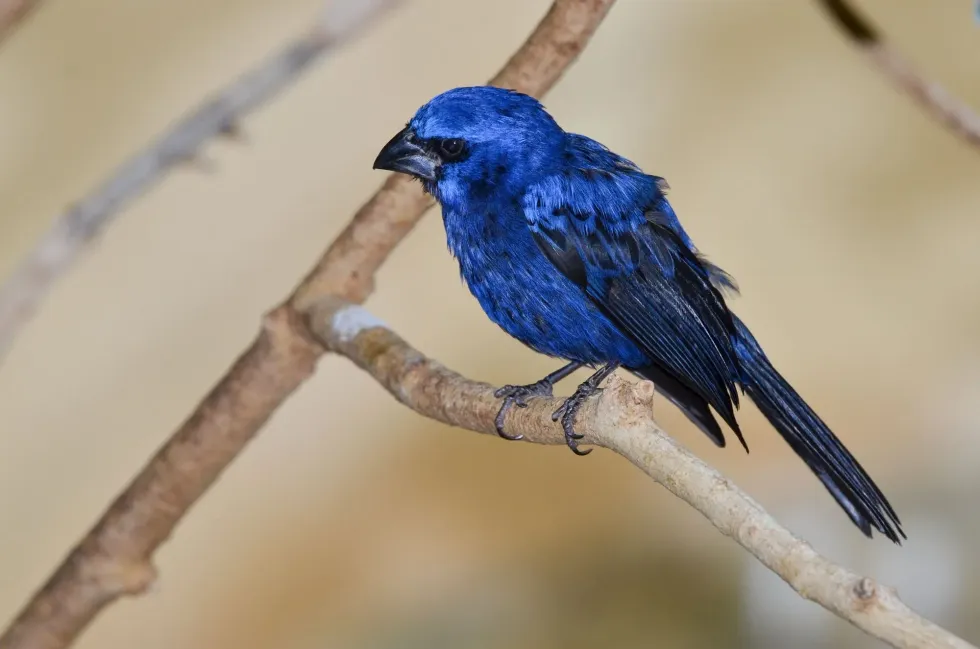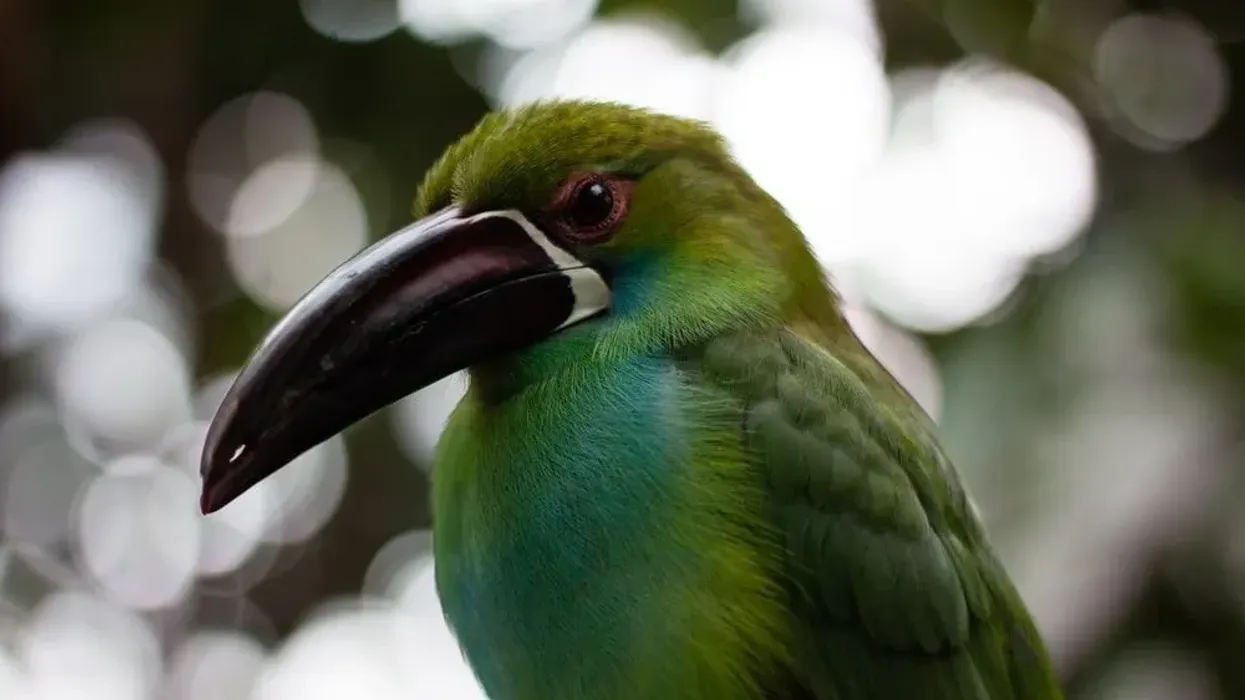On your next visit to Argentina, Venezuela, or Brazil, make sure to look around and search for a beautiful blue bird. With pure luck, you might spot the ultramarine grosbeak!
The ultramarine grosbeak (Cyanoloxia brissonii) is a proud member of the Cardinalidae family. Other binomial names of this species include Cyanocompsa brissonii and Passerina brissonii. The population distribution of this bird is spread entirely throughout South America. This bird is closely related to the blue-black grosbeak species (Cyanocompsa cyanoides).
The male ultramarine grosbeak displays a vibrant blue body, whereas if you search for the female bird of this species, you will see them with a toffee brown colored body. There are five different subspecies of this bird.
For more relatable content, check out these rose-breasted grosbeak facts and California quail facts for kids.
Ultramarine Grosbeak Interesting Facts
What type of animal is an ultramarine grosbeak?
The ultramarine grosbeak (Cyanoloxia brissonii) is a type of grosbeak.
What class of animal does an ultramarine grosbeak belong to?
The ultramarine grosbeak (Cyanoloxia brissonii) belongs to the class of birds.
How many ultramarine grosbeaks are there in the world?
We do not know the current total population of the ultramarine grosbeak (Cyanocompsa brissonii). However as they have been given a status of Least Concern by the IUCN, we know that their population is stable.
Where does an ultramarine grosbeak live?
The ultramarine grosbeak range is mainly in the lush beautiful lands of South America. Their distribution extends all the way from Brazil, Paraguay, Bolivia, to Argentina. There have also been sightings of this grosbeak species population in Colombia and Venezuela.
What is an ultramarine grosbeak's habitat?
The ultramarine grosbeak habitat is located around swamp edges, plantations, savannas, subtropical shrublands, and secondary forests.
Who do ultramarine grosbeaks live with?
This bird of Cardinalidae family, genus Cyanoloxia prefers a solitary lifestyle.
How long does an ultramarine grosbeak live?
The average lifespan of a grosbeak (Cyanoloxia brissonii) is about seven years.
How do they reproduce?
Not much is known about the breeding habits of this bird species. The main breeding activity takes place between the months of September to February.
The nest is not built too high and it is close to ground level. The clutch size of the ultramarine grosbeak (Cyanoloxia brissonii) bird is two to three eggs. After a duration of about two weeks, the laid eggs begin to hatch open.
What is their conservation status?
The ultramarine grosbeak (Cyanoloxia brissonii) has been listed as a species of Least Concern as this bird can be commonly seen flying around South America.
Ultramarine Grosbeak Fun Facts
What do ultramarine grosbeaks look like?
These little birds are actually very beautiful. The term 'ultramarine' references their body colors. Male grosbeaks have a beautiful royal blue plumage and this body is adorned with attractive upper wings of bright blue color.
Females however do not have these hues. They are of a brown hue which allows them to camouflage with their habitat. The juveniles also have a toffee brown colored body, and this feature is common in the blue-black grosbeak as well.
The bills of these grosbeaks are curved, slightly swollen, and of a black hue.

How cute are they?
We do love how small and lovely these birds look.
How do they communicate?
These birds have a very high-pitched call which is repetitive and fast. They make 'wee-wee' calls to call each other and sometimes make sharp, quick 'pik-pik' sounds.
How big is a ultramarine grosbeak?
The ultramarine grosbeak grows up to a body length of 5.9 in (15 cm). They are almost one and a half times the size of the Atlantic canary bird.
How fast can an ultramarine grosbeak fly?
Sorry, we do not know how fast this species of Passerina brissonii can fly.
How much does an ultramarine grosbeak weigh?
The Cyanoloxia brissonii weighs about 0.95-1.05 oz (27-30 g).
What are the male and female names of the species?
Male and female birds of this species do not have specific names.
What would you call a baby ultramarine grosbeak?
There is no separate name for a baby Cyanoloxia brissonii. A baby bird is usually referred to as a chick or a hatchling.
What do they eat?
This species of the Cardinalidae family feed on fruits, seeds, berries, and insects.
Are they dangerous?
This bird species of the Cardinalidae family are very territorial. They become very aggressive if any other bird enters their territory. If a human tries to handle them, they will peck your hand which could hurt.
Would they make a good pet?
This Cyanocompsa brissonii species is a little difficult to look after, so keeping them as pets would be a little difficult.
Did you know...
There are five different subspecies of birds under the Cyanoloxia brissonii (former Cyanocompsa brissonii). The range of the population of this subspecies, Cyanocompsa brissonii caucae, extends throughout western Colombia, covering the valleys of Dagua, upper Cauca, and upper Río Patía.
A population of Cyanocompsa brissonii minor is spotted in northern Venezuela. The subspecies, Cyanocompsa brissonii brissonii, can be spotted in northeastern Brazil.
Cyanocompsa brissonii sterea population range is distributed mainly in parts of South America, from eastern Paraguay to Brazil and Argentina. Finally, the Cyanocompsa brissonii argentina subspecies is seen in Bolivia, Paraguay, Brazil, and Argentina.
What are the different types of grosbeaks?
There are many different types of grosbeak birds. Other names for these birds include grosbeak finches as well as true grosbeaks. The other types are more related to other birds with smaller bills. The birds under this type comprise the evening grosbeak, hooded grosbeak, Japanese grosbeak, Chinese grosbeak/yellow-billed grosbeak, black-and-yellow grosbeak, collared grosbeak, spot-winged grosbeak, and the white-winged grosbeak.
Masked cardinal-grosbeaks are another type of grosbeaks and this group includes the red-and-black grosbeak, the black-faced grosbeak, the yellow-green grosbeak, and the crimson-collared grosbeak.
What is the difference between a ultramarine grosbeak vs glue grosbeak?
There are many differences between the ultramarine grosbeak (Cyanocompsa brissonii) and glue grosbeak (Passerina caerulea). The wing color of a male ultramarine grosbeak (Cyanocompsa brissonii) bird has black-hued wing bars on the blue wings, while a male bird of the Passerina caerulea species has chestnut tinted wing bars on blue wings.
There is also a difference in the clutch size between the two species. After breeding, the clutch size of an ultramarine grosbeak (Cyanocompsa brissonii) is about two to three eggs, while a glue brosbeak lays three to five eggs. Also, the body size of a Passerina caerulea is slightly larger than the Cyanocompsa brissonii.
These birds can be found in different ranges. The Cyanocompsa brissonii is found in eastern and central South America, with a smaller distinct population located in northern South America. Passerina caerulea birds have their range limited to North America.
Here at Kidadl, we have carefully created lots of interesting family-friendly animal facts for everyone to discover! To learn more about some other birds check out these evening grosbeak facts and metallic starling facts pages.
You can even occupy yourself at home by coloring in one of our free printable ultramarine grosbeak coloring pages.








